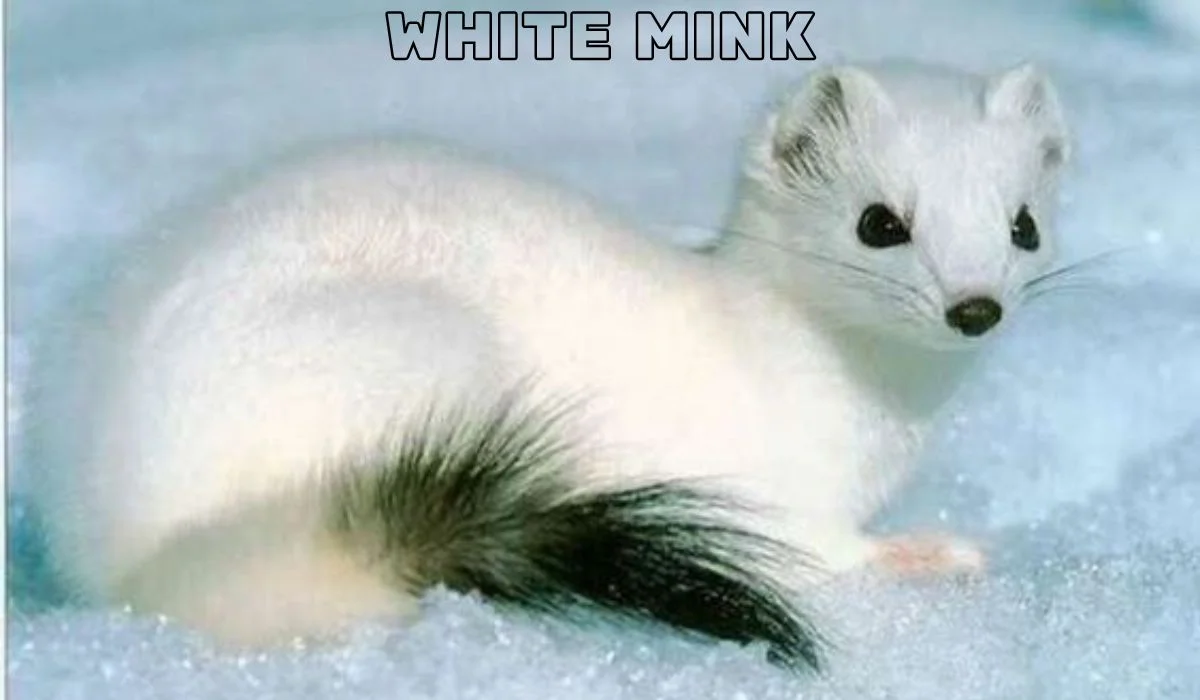The white mink is an elegant, almost mysterious creature. Its soft, luxurious fur has long been admired for its beauty, and it stands out among other animals due to its striking coloration. While many people are familiar with mink coats, fewer are aware of the white mink’s origins and characteristics. So, what makes the white mink so unique? Let’s dive into the world of this captivating animal and uncover the details that make it truly extraordinary.
The Distinctive Features of the White Mink
The white mink stands apart from its darker relatives, boasting a striking and often snow-like coat that can range from pure white to soft, creamy shades. The pelage of a white mink is one of its most defining features. Unlike other minks, whose fur varies from brown to nearly black, the white mink has a unique allure. Some white mink even display a slight iridescent sheen, making them even more attractive to admirers.
Trending: Exploring the Tñacuache : A Comprehensive Guide to the Didelphidae Family
The Striking Appearance
White mink, with their sleek fur and agile build, exude elegance. Their white fur often serves as a camouflage in snowy environments, though this coloration can sometimes work against them in other habitats. Their dark eyes create a striking contrast against their light fur, giving them an intense, almost otherworldly appearance.
A Comparison to Other Mink Species
While brown and black minks are more commonly found in the wild, it tend to be the result of selective breeding. This rare color variation sets them apart visually, but behaviorally, they share many characteristics with their darker counterparts. It can blend in better in colder climates, while darker mink may have an advantage in wooded or murky environments.
History of White Mink Breeding
They are not a naturally occurring species in the wild but are instead bred on farms. The fascination with white fur dates back several centuries, with fur traders and breeders working to develop this color variant for fashion and luxury markets.
Origins of Farm-bred Mink
Mink breeding for fur began in earnest in the early 20th century when the demand for luxurious, high-quality fur was at its peak. Breeders discovered that by selecting specific mink with lighter coloration, they could produce a line of minks with white or nearly white fur. As a result, farm-bred mink became popular, not only for their fur but also for their relatively docile behavior compared to their wild cousins.
Evolution of Mink Breeding
Over the years, breeding practices have refined the ability to create it with consistent coloration. However, this selective breeding also raised concerns about animal welfare, leading to evolving practices within the industry to address ethical concerns.
Habitat and Distribution of White Mink
The habitat of it varies depending on whether they are farm-bred or living in the wild. Farm-bred white mink are typically housed in controlled environments, while wild mink, though rarer, can be found in similar habitats to their darker counterparts.
Common Environments
White mink, like other mink species, are semi-aquatic and thrive in environments near water bodies like rivers, lakes, and marshlands. In the wild, they often make burrows along riverbanks, where they can hunt for fish, small mammals, and birds.
Farm-bred Versus Wild Mink Populations
Farm-bred they are raised primarily for the fur industry and have limited interaction with wild populations. Wild mink, on the other hand, have to fend for themselves, developing different hunting skills and survival tactics, although it in the wild are rare due to their visibility to predators.
The Unique Genetics Behind White Mink
The white coloration in mink is the result of a genetic mutation. The gene responsible for their light fur has been carefully selected by breeders over generations.
Genetic Factors Responsible for the White Coloration
It owe their unique appearance to a recessive gene that inhibits the production of melanin, the pigment responsible for darker fur. This gene was naturally occurring in some mink, but it became more prevalent through selective breeding.
How Selective Breeding Plays a Role
Selective breeding allows mink farmers to produce consistent its populations. Breeders will mate mink carrying the recessive gene for light fur, ensuring that more offspring display the desired white coat. This process, however, requires careful management to avoid potential health issues associated with a limited gene pool.
Behavioral Characteristics of White Mink
It behave similarly to other mink species, being highly territorial and semi-aquatic. They are solitary animals, except during the mating season.
Typical Behavior in the Wild
In the wild, they are opportunistic hunters, feeding on small mammals, fish, and birds. They are highly agile, using their sharp claws and teeth to catch prey. They are also excellent swimmers, often diving to catch fish or crustaceans in shallow waters.
Comparison With Other Mink Species
Behaviorally, there is little difference between it and their darker counterparts. Both are solitary, nocturnal creatures that prefer to live and hunt near water. However, their white coloration makes them more susceptible to predation, especially in environments where they cannot blend into the snow.
The Role of White Mink in the Fur Industry
They have played a significant role in the fur industry for many decades. Their pure, luxurious fur has been highly sought after in fashion markets worldwide.
Historical Importance
White mink fur was once a symbol of wealth and status. High-end fashion designers and furriers would use it pelts to create coats, stoles, and other luxury garments for the elite.
Ethical Concerns and Changes in Modern Practices
In recent years, the fur industry has faced increasing ethical scrutiny, leading to changes in how mink are bred and raised. Today, many countries have banned fur farming altogether, while others enforce strict welfare regulations.
Conservation and Ethical Implications
The breeding of it has raised questions about their impact on both farmed and wild populations.
Threats to Wild Mink Populations
Wild mink populations face threats from habitat destruction, pollution, and competition with non-native species like the American mink. White mink, due to their rarity in the wild, are particularly vulnerable.
Efforts in Mink Conservation
Conservation efforts focus on preserving wild mink habitats and limiting the impact of farmed mink escaping into the wild. Some regions are working to restore native mink populations through rewilding programs.
White Mink in Popular Culture
White mink have appeared in various forms of media and fashion, often symbolizing elegance and luxury.
Conclusion
White mink, with their unique beauty and storied history, continue to captivate the world. However, their future in the fur industry is uncertain due to ethical concerns and shifting fashion trends. As conservation efforts grow, the white mink’s role in both wild ecosystems and human culture will likely continue to evolve.





2 thoughts on “White Mink : Unveiling the Mystique of the Elegant Creature”